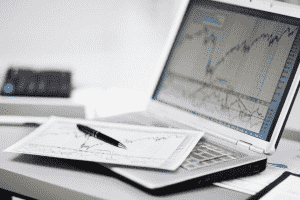

To combat this, we have ensured that our trading software can be used on any smart device with a browser and access to an active internet connection. As a result of this, you can trade on our platform with a smartphone, tablet, laptop, or computer. Many people struggle to understand the difference between traditional trading and CFD trading. The primary difference between these two types of trading is that you’re not directly trading the assets when trading CFDs, which is unlike traditional trading. When conducting CFD trading, you’re essentially trading a specified number of units that are being generated from that specific asset. The net profit of the trader is the price difference between the opening trade and the closing-out trade .
We have provided you with information pertaining to the most frequently traded assets to better understand the assets you can trade with. Various platforms provide you with the ability to trade the majority of assets currently available on the market. A solvency cone is a model that considers the impact of transaction costs while trading financial assets.

The various types of commodity futures available for trading in financial markets include metals, energies, agriculture, as well as livestock, and more. It is important that you have enough funds in your account to cover your margin. The margin calculator in the trading platform will automatically calculate how much you’ll need to open a position. CFDs are bought and sold in the base currency of the underlying market.
Find out how to place a CFD trade
The spread cost must be factored in to the calculated profits and losses resulting from CFD trading. The key calculation to work out your profit or loss is the difference between the price at which you enter and the price when you exit, multiplied by your number of CFD units. With FXTM for example, CFD traders can choose from CFDs on shares, indices, commodities. To find out more about the individual CFDs on offer, you can visit FXTM’s detailed contract specifications page.

You think Apple shares are going to appreciate and want to open a long CFD position. For example, if you expect the price of gold to increase you may want to open a position with a CFD on gold. Imagine the quoted price is $1,200/$1,205 (this is the bid/ask spread). For example, if you want to place an order for $1,000-worth of Brent crude oil and your broker requires 10% of margin, you will need only $100 as the initial amount to open the trade. A 10% margin means that you have to deposit only 10% of the value of the trade you want to open.
The maintenance margin goes up and down depending on the prices of assets you are trading. Your account’s equity must always cover the maintenance margin to keep the positions open, especially in case of running losses. Contracts for difference are a popular way of trading on the price of stocks and indices, commodities, forex and cryptocurrencies without owning the underlying assets. Learn everything you should know about CFD trading and how to use CFDs to go long and short on assets.
Why Trade CFDs with AvaTrade?
Accounts can often be opened for as little as $1,000, although $2,000 and $5,000 are common minimum deposit requirements. Some advantages of CFDs include access to the underlying asset at a lower cost than buying the asset outright, ease of execution, and the ability to go long or short. Becoming a successful CFD trader takes skill, knowledge and practice. Find out about how you can open Buy or Sell positions with CFDs on financial instruments such as Forex, Stocks, Commodities and Indices with Plus500. Open either short or long positions according to the market conditions and your trading strategy.
It is an advanced trading strategy that is utilized by experienced traders only. There is no delivery of physical goods or securities with CFDs. A CFD investor never actually owns the underlying asset but instead receives revenue based on the price change of that asset.

If the first trade is a buy or long position, the second trade is a sell. If the opening trade was a sell or short position, the closing trade is a buy. Many CFD brokers offer products in all of the world’s major markets, allowing around-the-clock access. Investors can trade CFDs on a wide range of worldwide markets.
Short-selling CFDs in a falling market
As an overall view, each asset is slightly different when trading. However, when using our software, you’re provided with the ability to easily tell each asset’s difference. This is because we conveniently lay everything out in our user interface. The primary difference between assets is the specific thing you’re trading, as well as how you’re choosing to trade it.
Compare accounts
Alternatively, discover which markets are hitting the headlines by following the latest market analysis reports and videos. Essentially, profit and loss are calculated by looking at the difference in price between when a contract is entered and when it is exited. With leveraged trading, you can short-sell the market in order to hedge against this downtrend possibility. If the market slides, what you lose on your portfolio may be offset by the gain from your short hedge using CFDs. If the market rises, then you will lose on your hedge but gain on your portfolio. If Apple appreciates to $170, you make $10 a share – a $1,000 profit.
Instead, we take a small commission fee when you open and close the trade. If you keep a daily CFD position open past the daily cut-off time , you’ll be charged an overnight funding charge. This is to cover the cost of maintaining your position over the longer term – as you’re trading on leverage. With this form of trading, you don’t own the underlying asset – you’re only getting exposure to its price movements. The difference between the bid and ask prices is known as ‘the spread’, and it represents the cost of trading a CFD.
Trading tools for CFD traders
For that reason, FXTM has created a guide to CFDs, answering the big question, ‘what is CFD trading? The value of shares and ETFs bought through a share dealing account can fall as well as rise, which could mean getting back less than you originally put in. You believe the market is about to experience a short dip, and are concerned how this will affect the value of your portfolio. This is because the funds required to open and maintain a position – known as the CFD margin – are only a part of the total trade size.
However, CFD trading is risky, and you could make a loss greater than your initial deposit amount. When trading CFDs, you’re predicting whether an asset’s price will rise or fall. If you think the asset’s price will go up, you’ll ‘buy’ and if you think the price will fall, you’ll ‘sell’ . The outcome of your prediction will determine whether you make a profit or incur a loss. A stop-loss order is an instruction that tells your provider to close your position once it reaches a specific level set by you. This will, as the name suggests, be at a worse price than the current market level and can typically be triggered on losing positions to help minimise losses.
We understand that you may be anxious to start trading and want to rush through all the steps in order to get there. However, taking your time and carefully setting up your account is going to provide you with many benefits. This stage is arguably one of the most important, so we recommend dedicating some time to set up your account properly. You may be confused about which assets are going to help you best achieve your trading objectives if you’re just starting in the trading world.
If, however, the price falls to $150 a share, you lose $10 a share – a $1,000 loss. When you open a CFD position, you select the number of contracts you would like to trade . Conversely, you could make a loss if the market moves against you. Some experienced traders set up more than one CFD account with the same broker to trade different assets or to follow alternative trading strategies. Carefully read the Terms & Conditions and Disclaimer page of the third-party investor platform before investing.